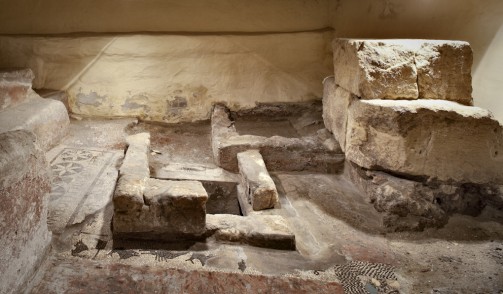In 1956, earthworks for the construction of a new I.N.P.S. building in the area between XX Settembre Street and Regina Margherita Avenue revealed ancient wall structures. The excavations brought to light the remains of a room with a well and some tanks pertaining to a fullonica, that is, a workshop used for washing and dyeing cloth, in which the processing cycle involved the immersion of fabrics in tanks containing bleaching mixtures or dyes. At the foot of a masonry bench, another section of mosaic bore the inscription “M. Ploti Silisonis F. Rufus,” perhaps an insignia indicating the name and patronymic of the owner of the establishment.
On the ruins of the complex, dated to the end of the 1st century B.C., a quadrangular structure made of reused blocks was built in the late Roman period, embedded in a wall system that should perhaps be interpreted as a late defensive work. Below the I.N.P.S. building a cramped room includes part of the cocciopesto and mosaic paved environment with the well, a pallet and two tanks.
A few rows of blocks, some of them ashlar, and two isolated limestone ashlars, of which one has a funerary inscription and the other a Doric frieze, remain of the quadrangular structure, which was almost completely destroyed.









